Fountain Group - page 2
Page 1 2
The Fountain Complex expands over the geyesrite flat northwest of Paint Pot Hill and encompasses at least 14 geysers. Most of them are close enough to the boardwalk to be observed easily. Starting in the east the first one is Twig Geyser, erupting mainly before and during Fountain Geyser is active.
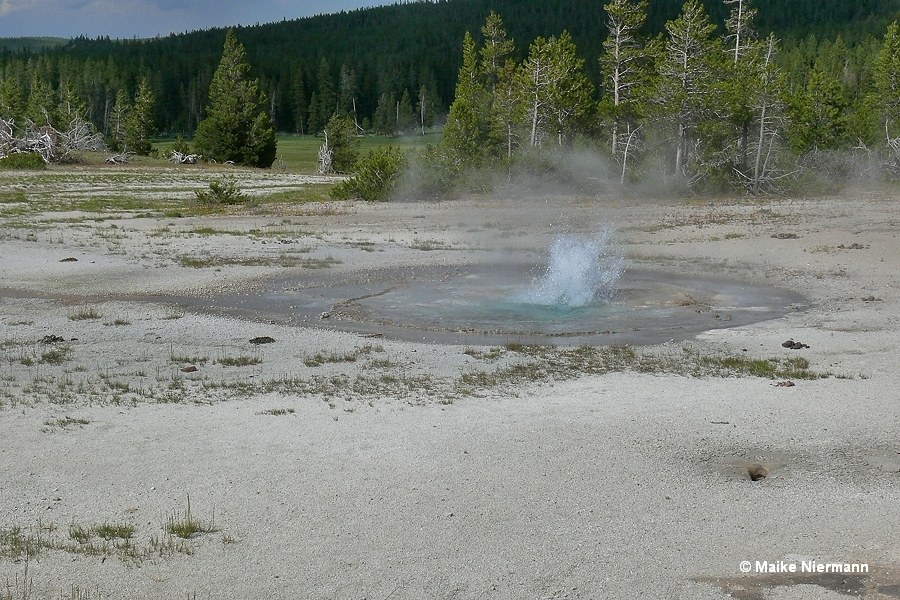
Located between Twig Geyser and the boardwalk, Bearclaw Geyser only attracts attention when it's erupting, if at all. The small geyser spouts only a few inches high out of three separate vents.
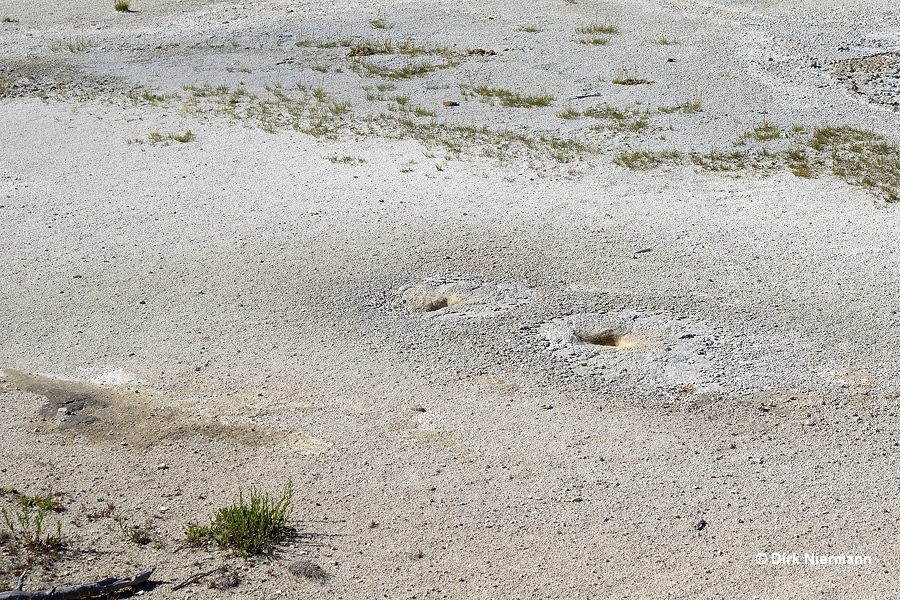
Across the boardwalk from Twig and Bearclaw another quite active geyser can be found, Jet Geyser. Jets window of activity, as true for most geysers of the fountain complex, is strongly linked to the other geysers and has more or less fixed positions in Fountains interval.
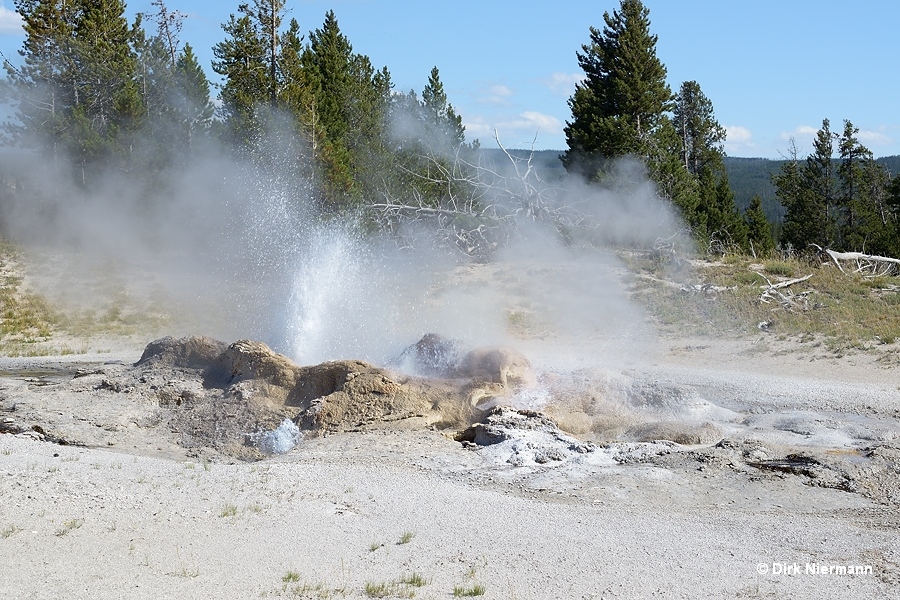
Neighbor on the west side to Jet is Super Frying Pan (also called Sizzler Geyser), interacting in an analogical manner with the other members of the system. Eruptions occur at least once in a Fountain interval.
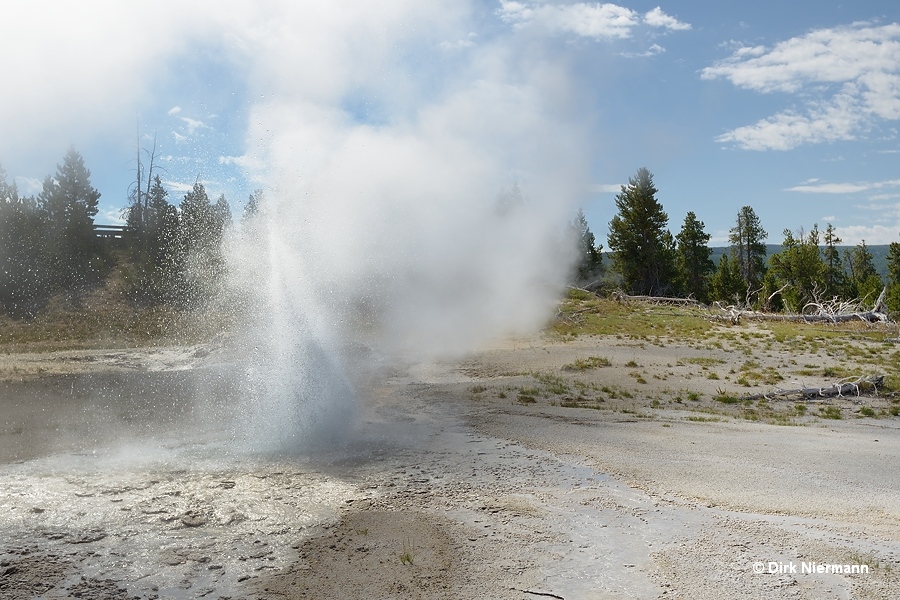
All remaining geysers of the Fountain complex are located on the other, northwest side of the boardwalk. Star of the show is Fountain Geyser, at least if Morning Geyser is not active. Fountain Geyser is one of the predicted geysers of the Yellowstone Visitor Center. Usually, it is erupting each 3.5 to 7.5 hours up to 15 m (50 feet) high, on rare occasions even higher. Eruptions may vary significantly regarding power and height, though. In July 1952 nine visitors, watching the play from the old walkway, were scalded by an unexpectedly strong, angled torrent of water. As a consequence the boardwalk has been rerouted at a larger distance from the geyser.
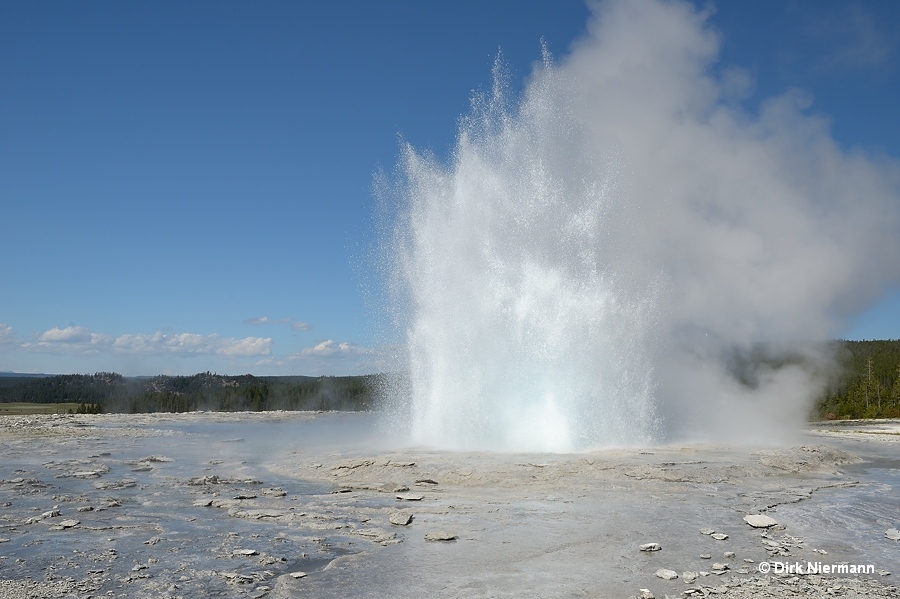
Ejecting big quantities of water to a height of 45 m (150 feet) and more, Morning Geyser is the largest geyser of the Fountain Group, but very rarely active. On average the play occurs less than once per year. As seen from the boardwalk, it is located beyond (north of) Fountain Geyser, more than twice as far away.
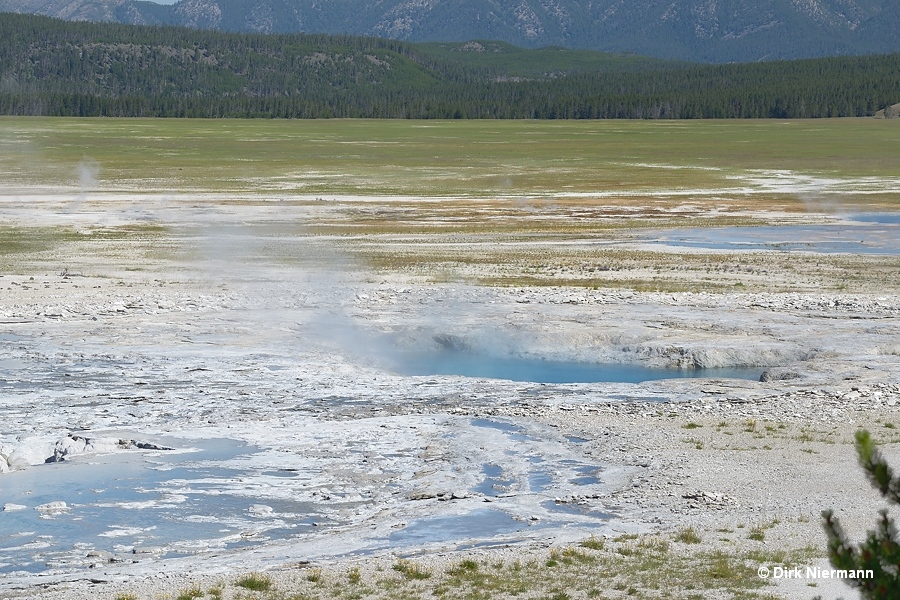
The pool at the northeastern corner of Morning's crater is a geyser on its own, called Morning's Thief. Its activity is infrequent and erratic, but far more common compared to Morning. Durations are generally short, spanning from a single burst for less than a second up to a few bursts for less than a minute. Most eruptions are triggered by the start of Fountain Geyser, then both geysers play simultaneously for a short while. Rarely, Morning's Thief Geyser starts with a big blue bulb as known from Strokkur on Iceland, but much larger.
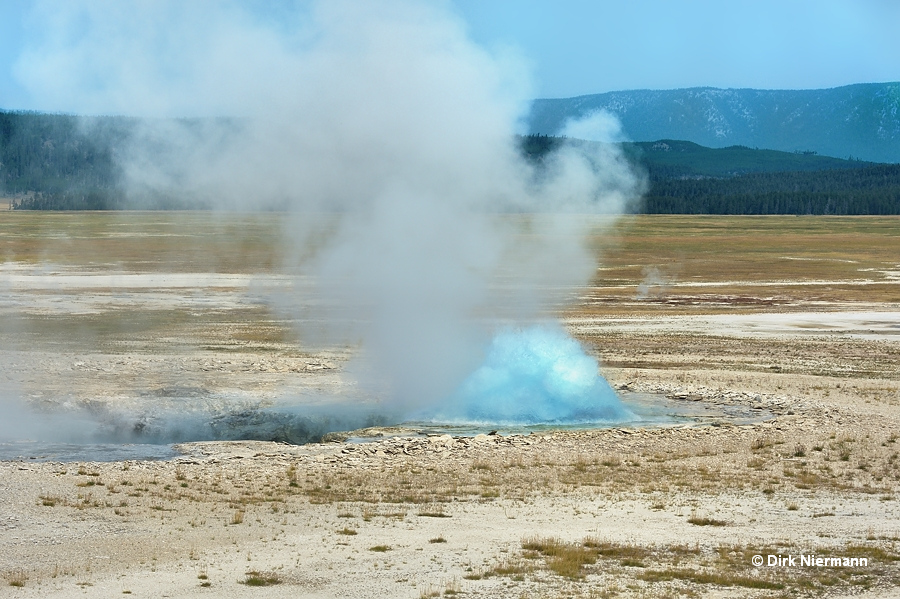
Eruptions of Morning's Thief Geyser may reach 15 m (50 feet) height, and obviously this geyser has increased its power over the last decade. The suspicion that activity of Morning's Thief may rob energy from Morning Geyser and prevent it from erupting could not be proven yet.
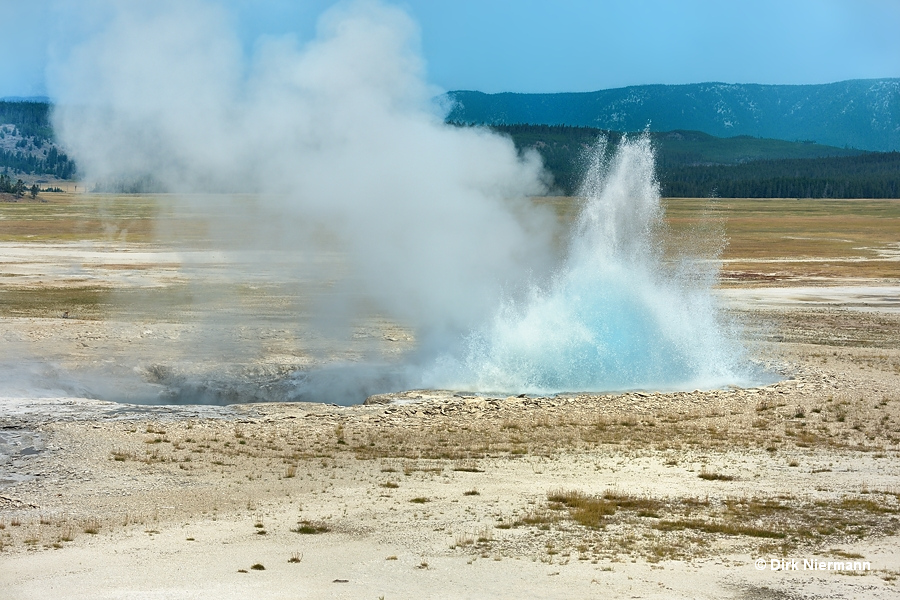
If you stand on the boardwalk close to Morning and Fountain Geyser and look in direction of Kaleidoscope Group far out on the sinter flats, then the crater of Sub Geyser is in your sight line. Seemingly empty, the crater still contains water, but the level is deep down and out of sight. Although quite rare, some eruptions reach a sufficient height to be seen from the boardwalk.
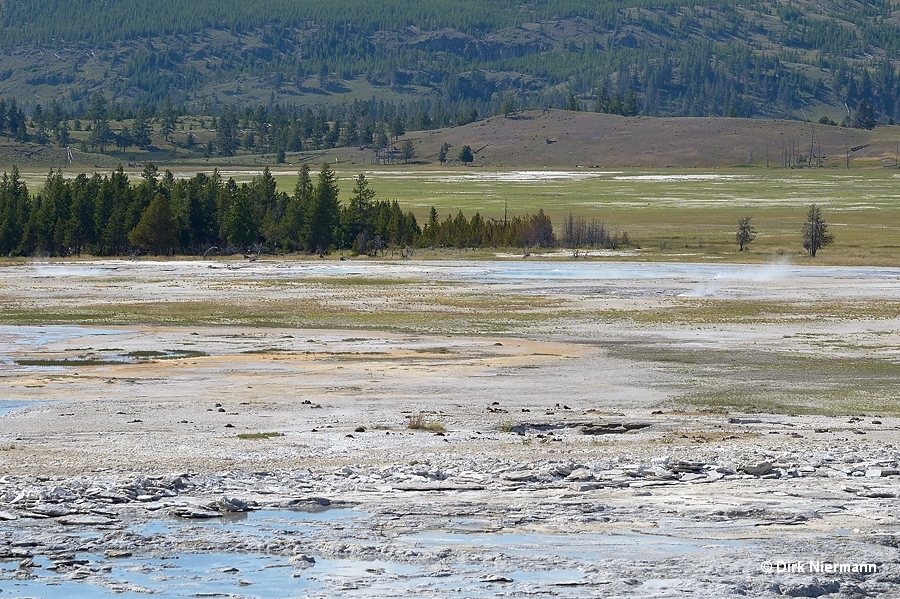
The top of some eruptions are all to be seen from Stalactite Geyser, too. As a member of the Fissure Springs it lies southwest of Sub Geyser and even a bit farther away from the boardwalk.
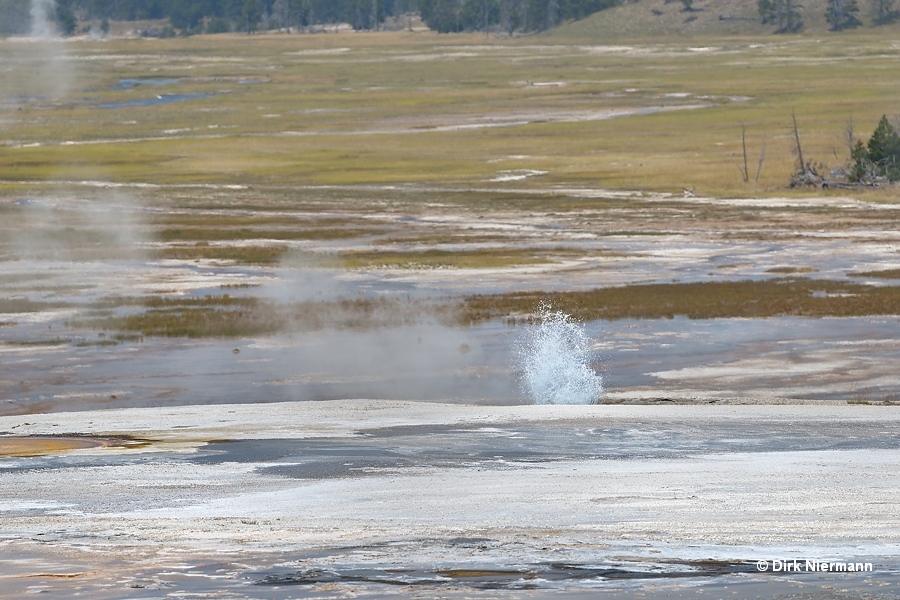
One of the lesser impressive geysers on location is Spasm Geyser, though it's located next to the boardwalk. Often its crater is empty, but it can erupt continuously for several hours and is sometimes active more than once during Fountain's play.
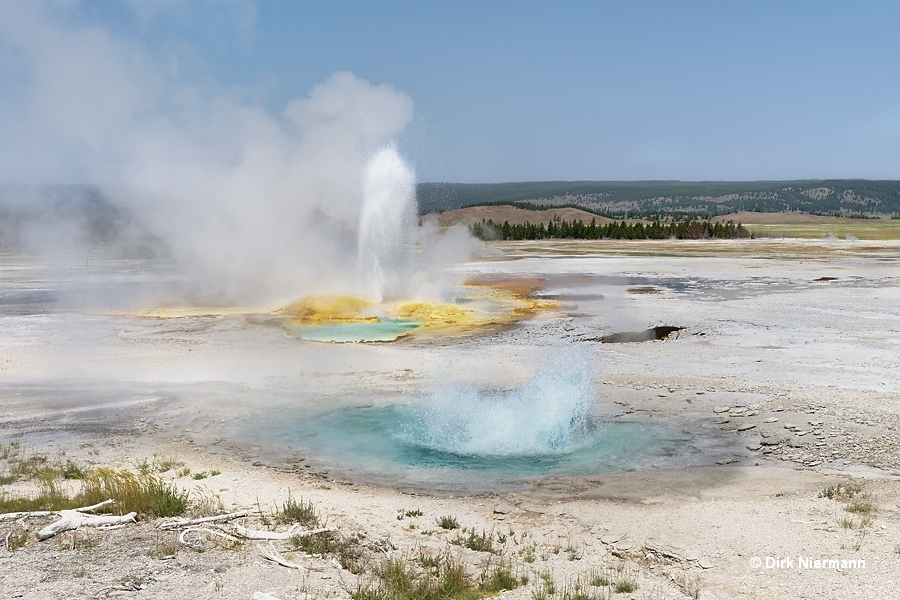
Clepsydra Geyser, named after the Greek term for water clock, erupts from two major vents at the far side of the cone up to 14 m (45 ft) high, while emissions from the central, partially white colored orifice usually remain well under 4 m (13 ft). Additional, but only some feet high spouting vents are to be found at the rear side of the mound. Clepsydra shows by far the highest level of activity in the Fountain Group. If there weren't short pauses at the end of Fountains play, it would have to be classified as perpetual spouter. The geyser entered this so-called "wild-phase" after the Hebgen Lake earthquake in 1959. Also in terms of colors Clepsydra always makes a very grateful object for photographers.
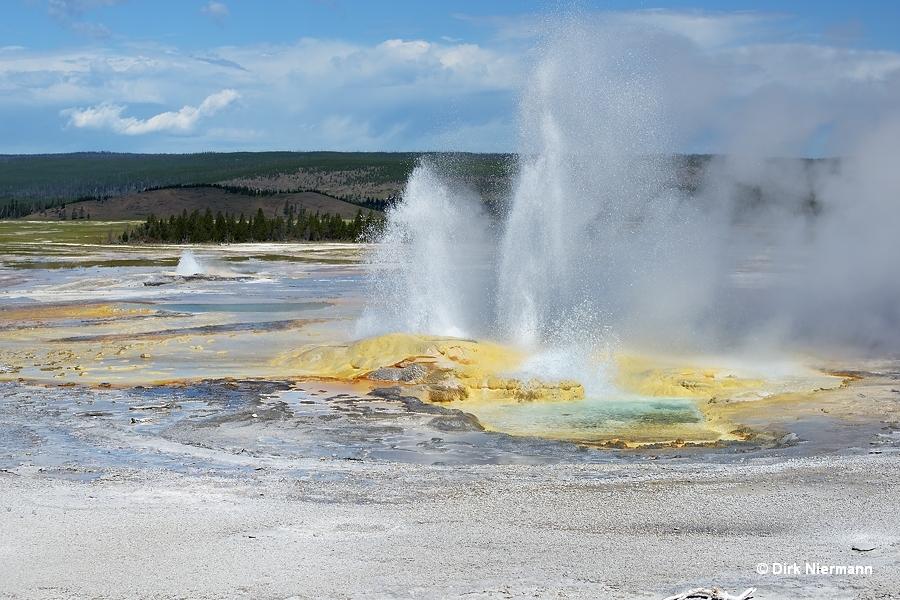
Second busiest geyser on location after Clepsydra is New Bellefontaine Geyser with intervals of only a few seconds. Unfortunately, it is outshined by Clepsydra, which is more spectacular, closer to the boardwalk, and largely obscures the look at New Bellefontaine. In the RCN database of Montana State University this geyser is listed simply as Bellefontaine Geyser. The pool between Clepsydra and New Bellefontaine seems to have neither a name nor a designation. Nevertheless, it is quite colorful and well worth a shot with a telephoto lens.
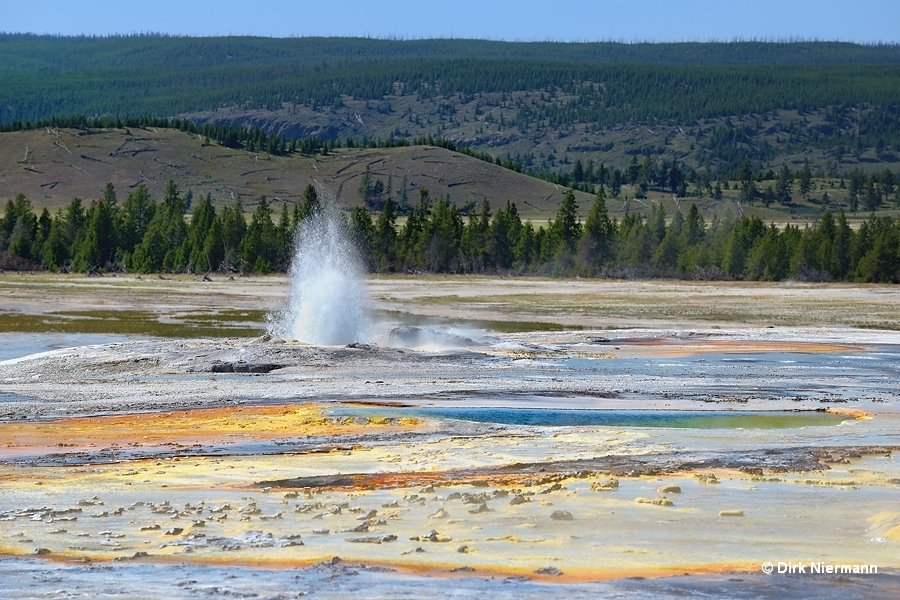
On the lefthand side at the base of the sinter cone of New Bellefontaine Geyser there is a little hole, belonging to Fitful Geyser. It is less active than its larger neighbor, and its eruption heights remain well below the ones of New Bellefontaine Geyser.
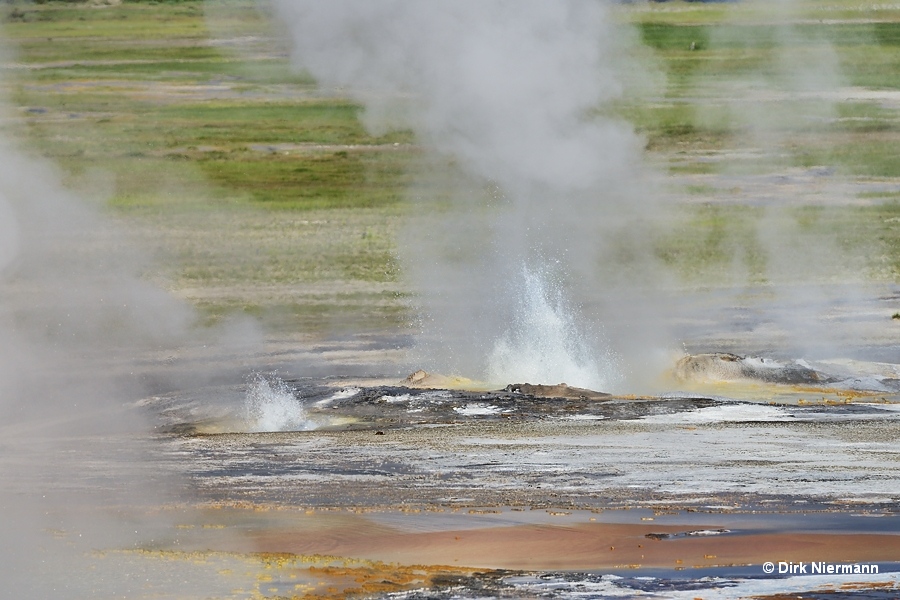
Jelly Geyser south of Clepsydra has been dormant almost all of the time in the last years. All to be usually observed is a changing water level from nearly empty up to overflowing.
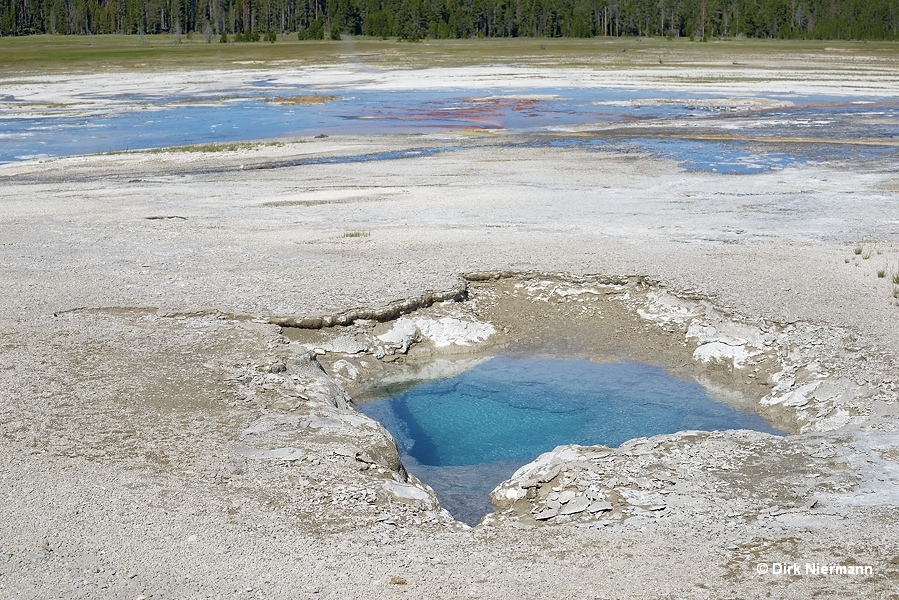
The next three geysers are all quite distant from the boardwalk westerly on the sinter flat and therefore usually gaining not much interest from visitors. But many may have noticed a bright orange rim of thermophilic bacteria near the western base of the sinter mound of the Fountain Group. It belongs to a large and beautiful hot pool with the designation LNN012. Unfortunately, the look at the hot pool itself is largely obscured by the sinter mound. South of LNN012 Mask Geyser can be spotted at a fairly large distance.
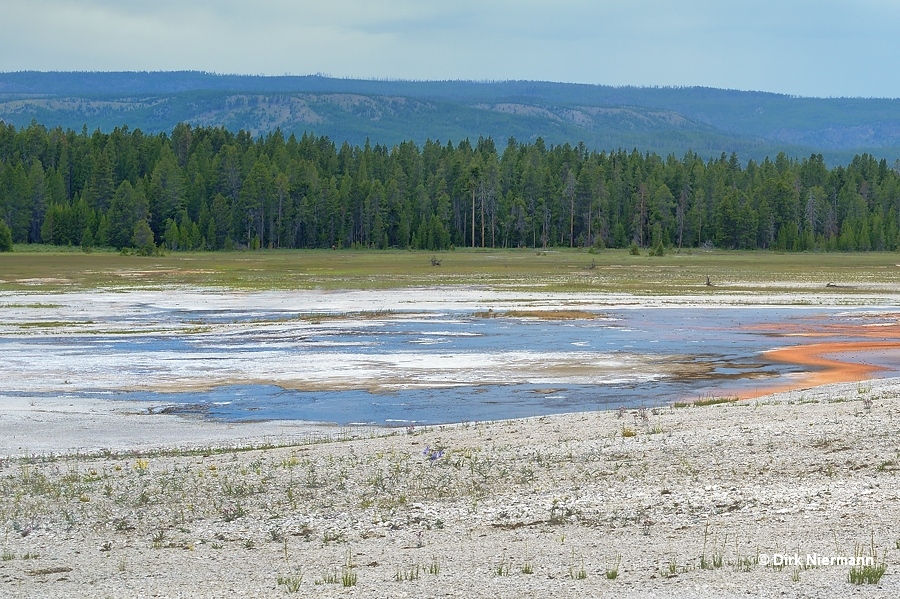
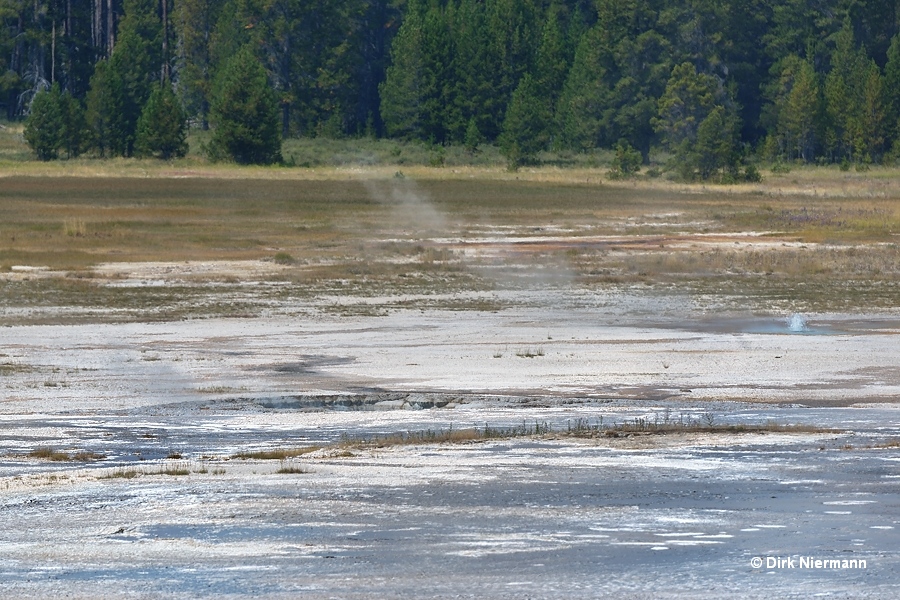
Compared to Mask Geyser, Old Bellefontaine Geyser (listed as New Bellefontaine Geyser in the RCN database) is located much closer to the trail and easier to observe. Eruptions are rare and typically very brief.
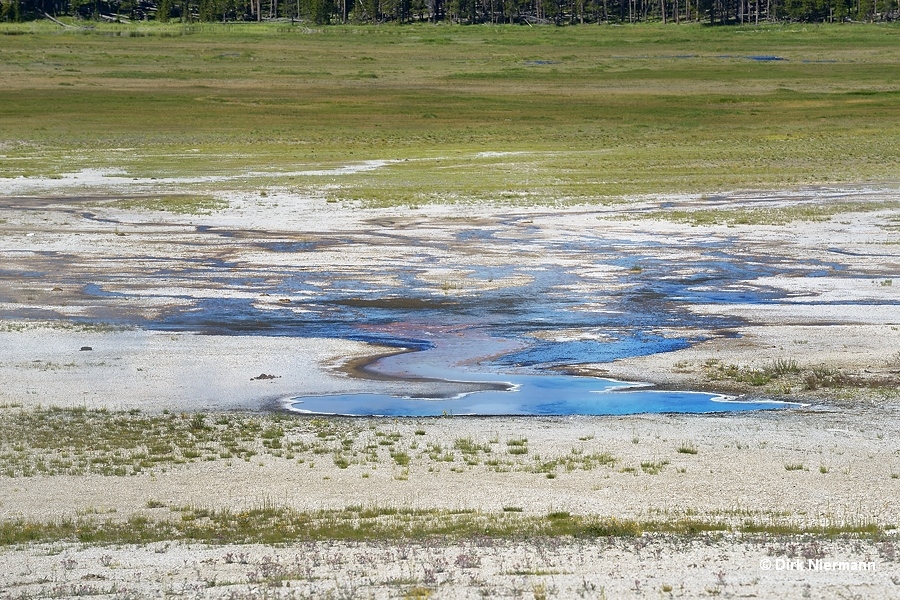
The last and southernmost of the three remote geysers is also the one hardest to spot, even if it is just erupting. Frolic Geyser is not so far away from the boardwalk as Mask Geyser, but it is only a very small pool within a cluster of other small pools (many thanks to geyser expert Rocco Paperiello for his help to find the feature on location). At least one of its neighbors (UNN-FTG-4) is also a geyser, another one a perpetual spouter. The activity seems to be highly variable from season to season.
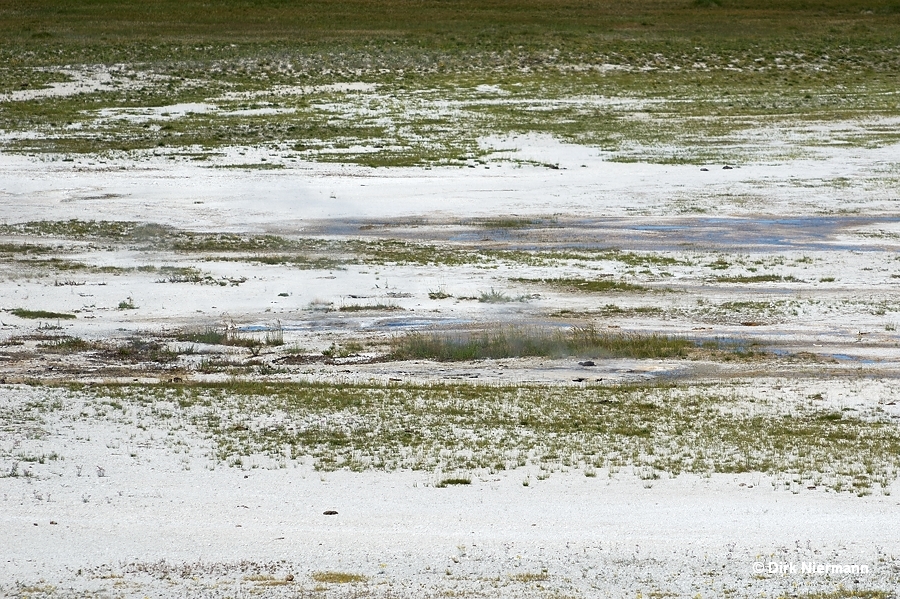
Page 1 2